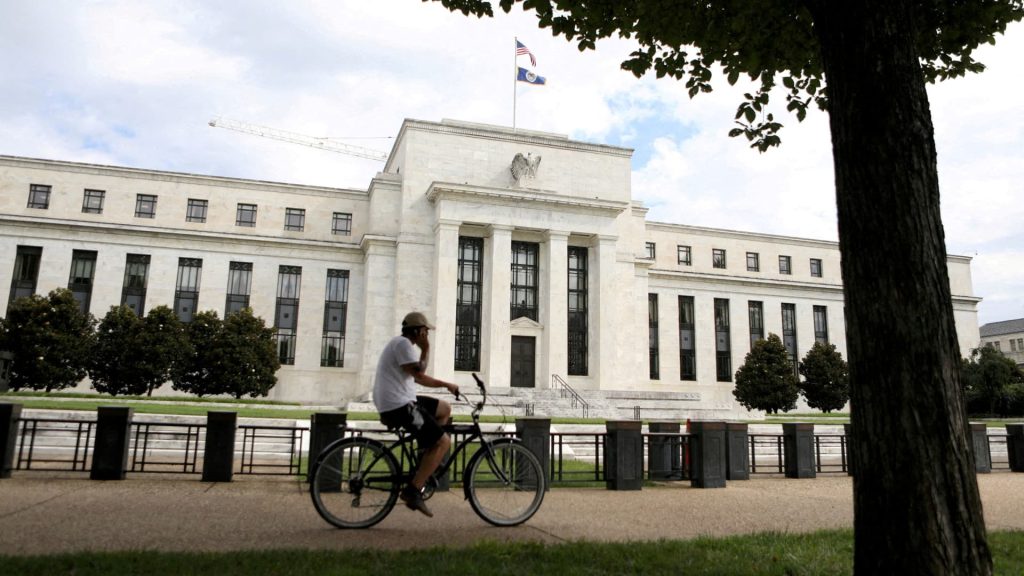On the heels of a stronger-than-expected jobs report and elevated inflation readings, the Federal Reserve is expected to hold interest rates steady at the end of its two-day meeting this week — despite pressure from President Donald Trump.
“Consumers have been waiting for years to see pricing come down. NO INFLATION, THE FED SHOULD LOWER ITS RATE!!!” Trump said in a Truth Social post Friday.
As an independent agency, the central bank has always operated autonomously from the White House. Federal Reserve Chair Jerome Powell has repeatedly said that monetary policy decisions are completely separate from politics. At the same time, the president’s new trade policies are a barrier to cutting rates, in part because economists expect the new tariffs could lead to a widespread rise in prices that complicate inflation forecasts.
To be sure, many Americans are getting squeezed by high prices and high borrowing costs, while the potential inflation impacts from a costly trade war weigh heavily on household budgets.
“Consumers are always the ones who pay the price,” said Eugenio Aleman, chief economist at Raymond James.
More from Personal Finance:
What experts say about selling gold jewelry for cash
What typically happens to stocks after periods of high volatility
Why tariffs will hurt low income Americans more than rich
The federal funds rate sets what banks charge each other for overnight lending, but also affects many of the borrowing and savings rates consumers see every day.
“Uncertainty rules amid a trade war and the ever-changing landscape of tariffs,” said Greg McBride, Bankrate’s chief financial analyst. “But with the hard data on consumer spending and employment still hanging in there, the Fed will remain firmly planted on the sidelines.”
Markets now widely expect the Fed to wait to cut rates until July, with two or three more reductions to follow by the end of the year.
Once the federal funds rate comes down, borrowing costs could decrease across a variety of consumer debt, such as auto loans, credit cards and mortgage rates, making it easier to access cheaper money.
Here’s a breakdown of how it works.
Credit cards
Most credit cards have a variable rate, so there’s a direct connection to the Fed’s benchmark.
For the most part, the average annual percentage rate has hovered just over 20% this year, according to Bankrate, not far from last year’s all-time high.
The Fed holding steady isn’t the only thing keeping credit card rates high. “Banks are nervous about all of the uncertainty in the economy and what it means for consumers,” said Matt Schulz, chief credit analyst at LendingTree.
“When that happens, banks try to minimize risk as much as possible, and one of the ways they do that is to raise interest rates on credit cards,” he said.
Credit card debt continues to be a pain point for consumers struggling to keep up with high prices. Total credit card debt and average balances are also at record highs.
Mortgages
Although 15- and 30-year mortgage rates are largely tied to Treasury yields and the economy, concerns about the direction of the economic policy and Trump’s tariff plans have been a drag on rates, according to the Mortgage Bankers Association.
The average rate for a 30-year, fixed-rate mortgage is now 6.81%, down from 7.04% at the beginning of the year, according to Bankrate. But for potential home buyers, that’s not enough of a decline to give the housing market a boost.
“Unfortunately for those shopping for a home this summer, rates are likely to stay in or around that range in the near future,” Schulz said.
Auto loans
Although auto loan rates have seen little change, car payments have gone up because prices are rising, while Trump’s 25% tariffs of imported vehicles adds more pressure.
Currently, the average rate on a five-year new car loan is 7.33%, down from 7.53% in January, according to Bankrate.
Student loans
Federal student loan rates are fixed for the life of the loan, so most borrowers are somewhat shielded from Fed moves and recent economic turmoil.
Interest rates for the upcoming school year will be based in part on the May auction of the 10-year Treasury note and aren’t likely to change much. Undergraduate students who took out direct federal student loans for the 2024-25 academic year are paying 6.53%, up from 5.50% in 2023-24.
Although borrowers with existing federal student debt balances won’t see their rates change, many are now facing other headwinds and fewer federal loan forgiveness options.
Savings
On the upside, top-yielding online savings accounts still offer above-average returns and currently pay as much as 4.5%, according to Bankrate. While the central bank has no direct influence on deposit rates, the yields tend to be correlated to changes in the target federal funds rate — so holding that rate unchanged has kept savings rates elevated, for now.
“For consumers, oftentimes the best way to protect your finances in times of uncertainty is to double-down on boosting emergency savings and eliminating high interest rate debt,” said Bankrate’s McBride. “This builds a buffer in the event of an income disruption or unanticipated expenses and insulates you from costly borrowing.”

